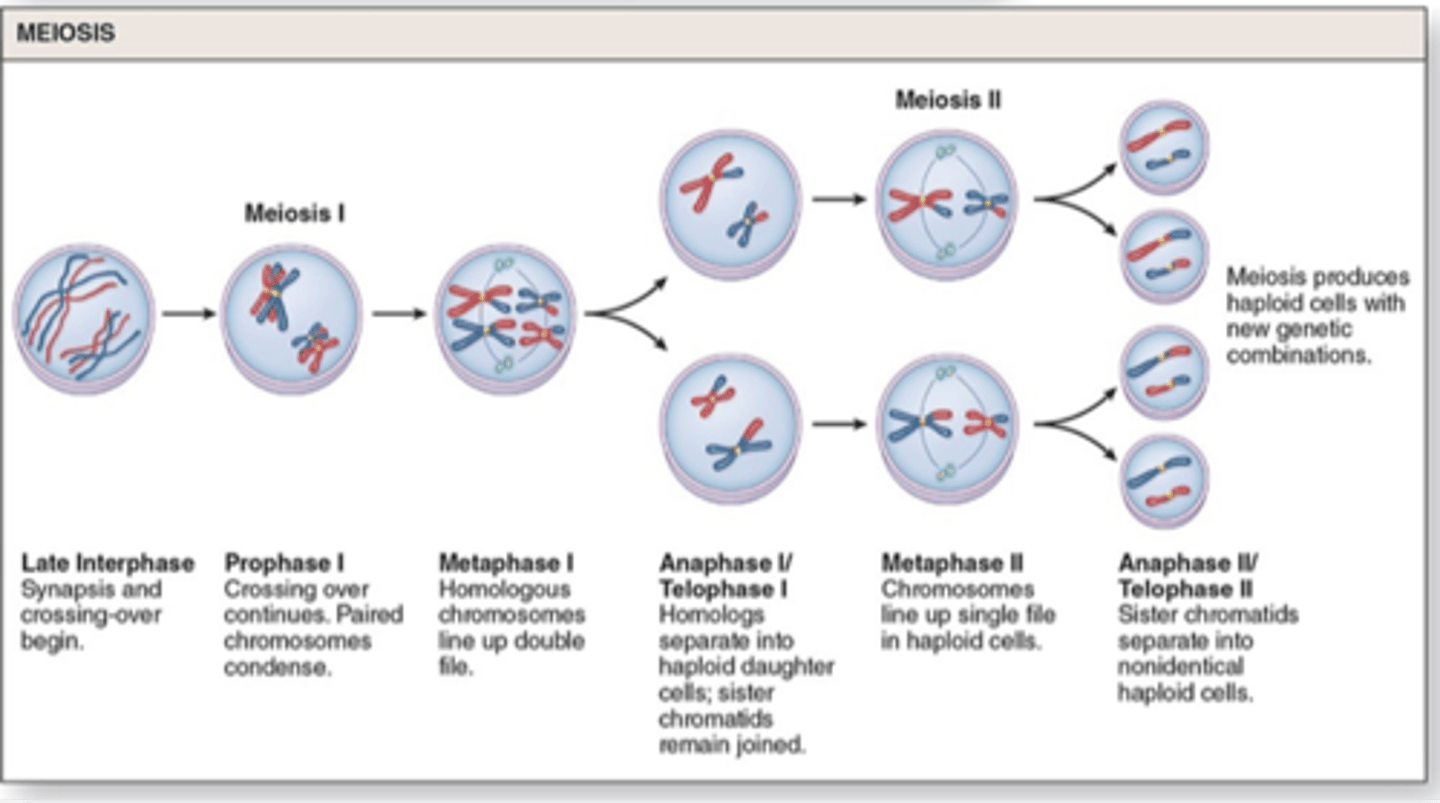Cell Differentiation and Nucleus Structure in Cytology I
1/87
There's no tags or description
Looks like no tags are added yet.
Name | Mastery | Learn | Test | Matching | Spaced |
|---|
No study sessions yet.
88 Terms
Cell
Basic structural and functional unit of any living thing
What are the 3 components of cell theory?
1. All living things are made of one or more cells
2. All cells come from existing cells
3. Cells are the basic building blocks of life
Characteristics of eukaryotic cells
Can be unicellular or multicellular
Form tissues
Have a nucleus
Have organelles
Characteristics of prokaryotic cells
Unicellular organisms that
Never form tissues
No nucleus
No organelles except ribosomes
What 2 components are found in prokaryotic but NOT eukaryotic cells?
Cell wall
Capsule
Cells are diverse in?
Structure and function
Human cells features are?
Eukaryotic cells that do not have a cell wall
Form human tissues
Undergo differentiation
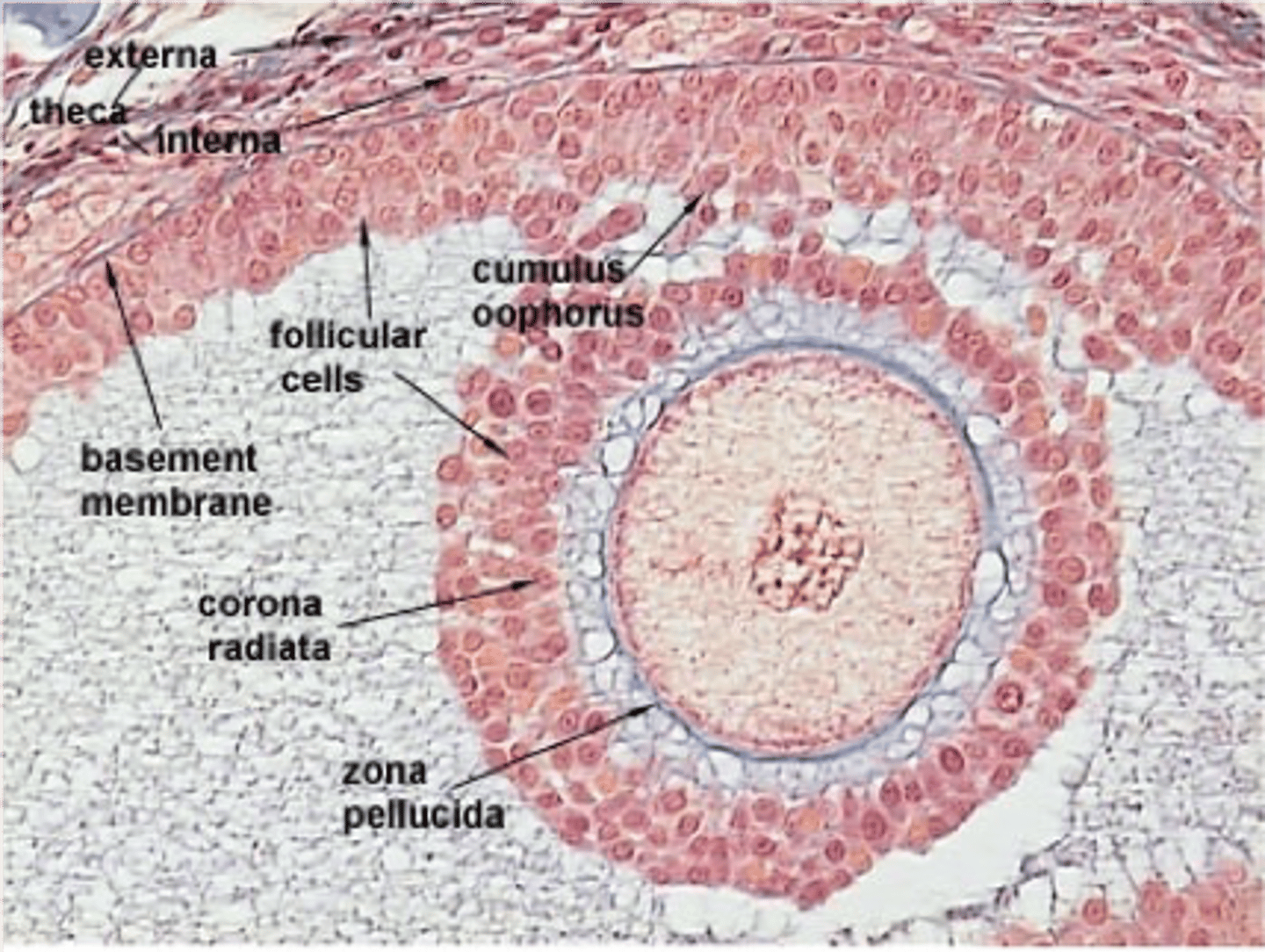
Cell differentiation:
Interaction between genes and cellular microenvironment leading to different genetic expression.
What is the result of cell differentiation?
One or more functions become more important.
Two main outcomes:
1.Different appearance and structure
2.Functional specialization
Specific function(s) are supported by?
Specific function(s) supported by different morphology
Totipotent stem cell
A cell that can differentiate into any cell type, including all embryonic and extra-embryonic cell types
Differentiated cells
Are mature cells that have specialized functions supported by different morphology
What is the nucleus?
The command center of the cell, a membrane-bound organelle that stores genetic material and coordinates cell activities
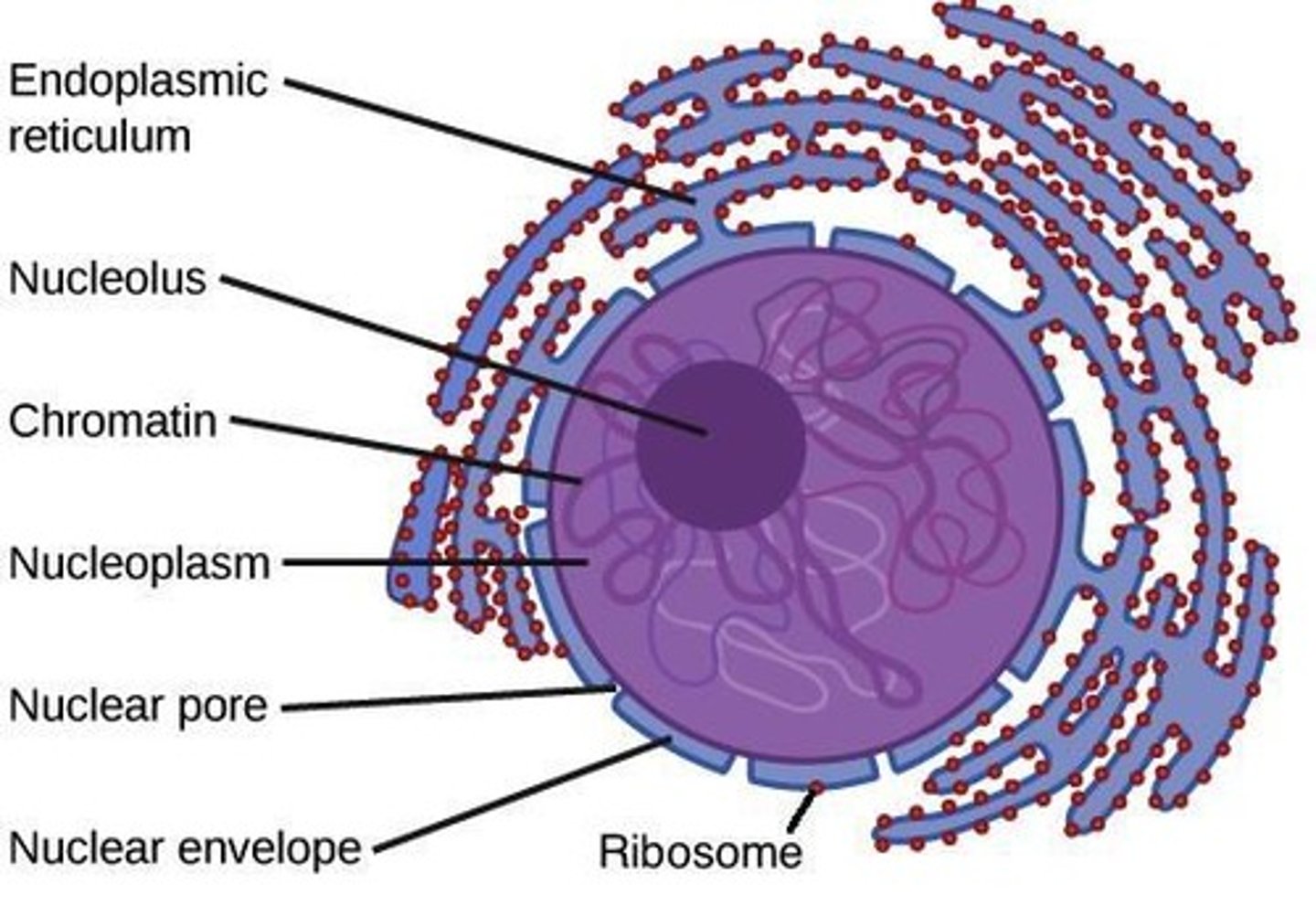
What molecular machinery is involved in the nucleus?
Molecular machinery for:
DNA synthesis
RNAs processing
4 components of the nucleus?
1.Nuclear envelope
2. Nucleoplasm
3.Chromatin
4.Nucleolus
Nuclear envelope has?
Pores
Nucleoplasm is?
Fluid inside the nucleus
Nucleoplasm is AKA?
Karyoplasm
What does nucleoplasm contain?
water, dissolved ions, and a complex mixture of other molecules
Function of nucleoplasm?
suspension medium for other nuclear components
Chromatin contains?
DNA + proteins
Briefly explain the nuclear envelope
A selectively permeable barrier formed by two membranes with pores that separates nucleoplasm from cytoplasm
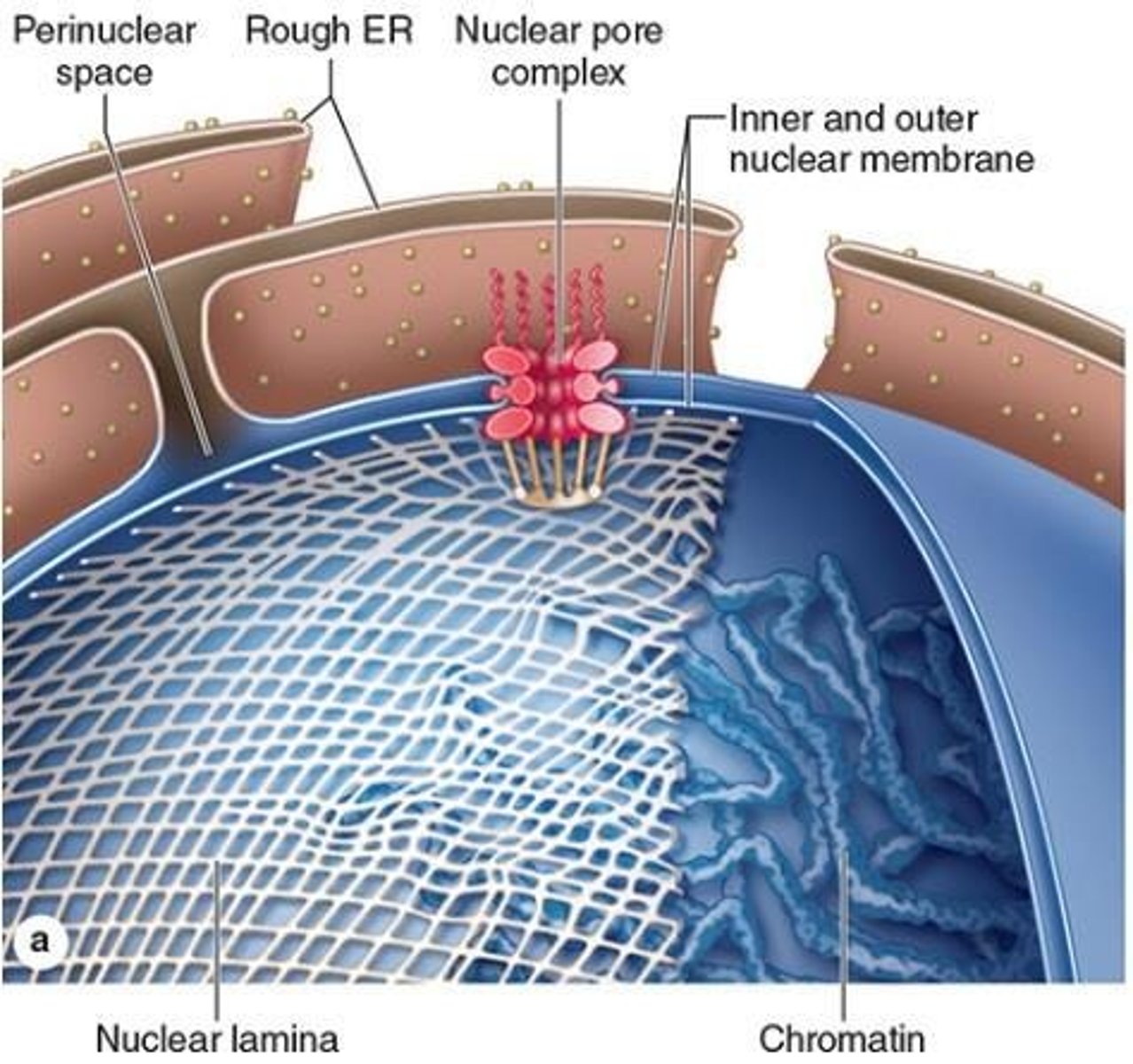
3 components of the nuclear envelope:
1. Inner membrane (associated with nuclear lamina)
2. Outer membrane (binds ribosomes)
3. Perinuclear space or cisterna (in between)

The outer membrane and perinuclear space of the nuclear envelope are continuous with?
with the rER
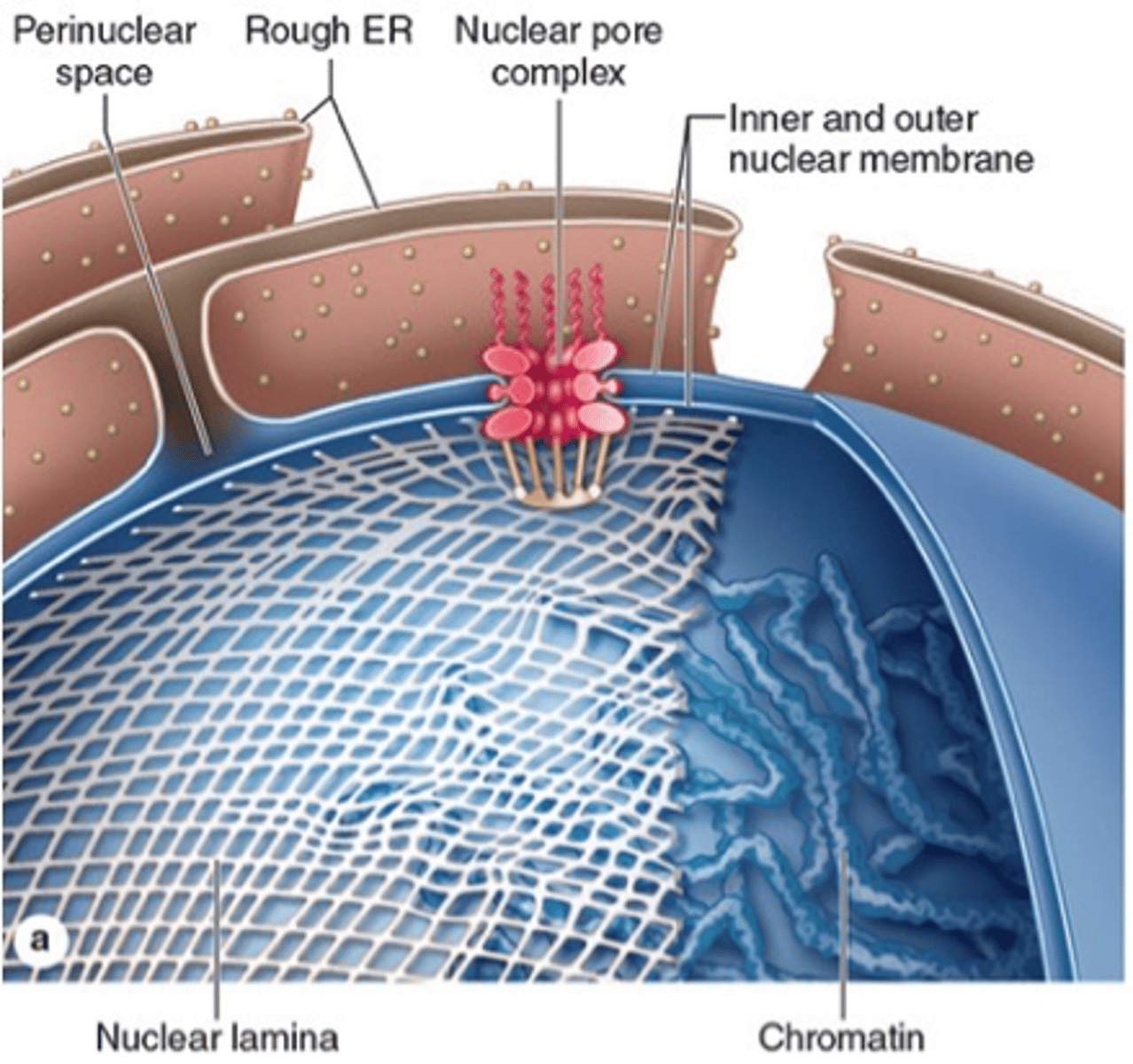
Structure of the nuclear pores:
Has various nucleoporins (core proteins) with eightfold symmetry around a lumen .
-> Nuclear pore complexes bridge inner and outer membranes.

Functions of the nuclear pores:
1. Passage of ions and small molecules by simple diffusion
2. Regulate movement of macromolecules between nucleoplasm and cytoplasm
How does movement occur in the nuclear pores?
GTP hydrolysis by GTPases provide energy for import and export
What does the nuclear lamina stabilize?
The nuclear lamina stabilizes the nuclear envelope
Describe the structure of the nuclear lamina
Meshwork of proteins closely associated with inner membrane
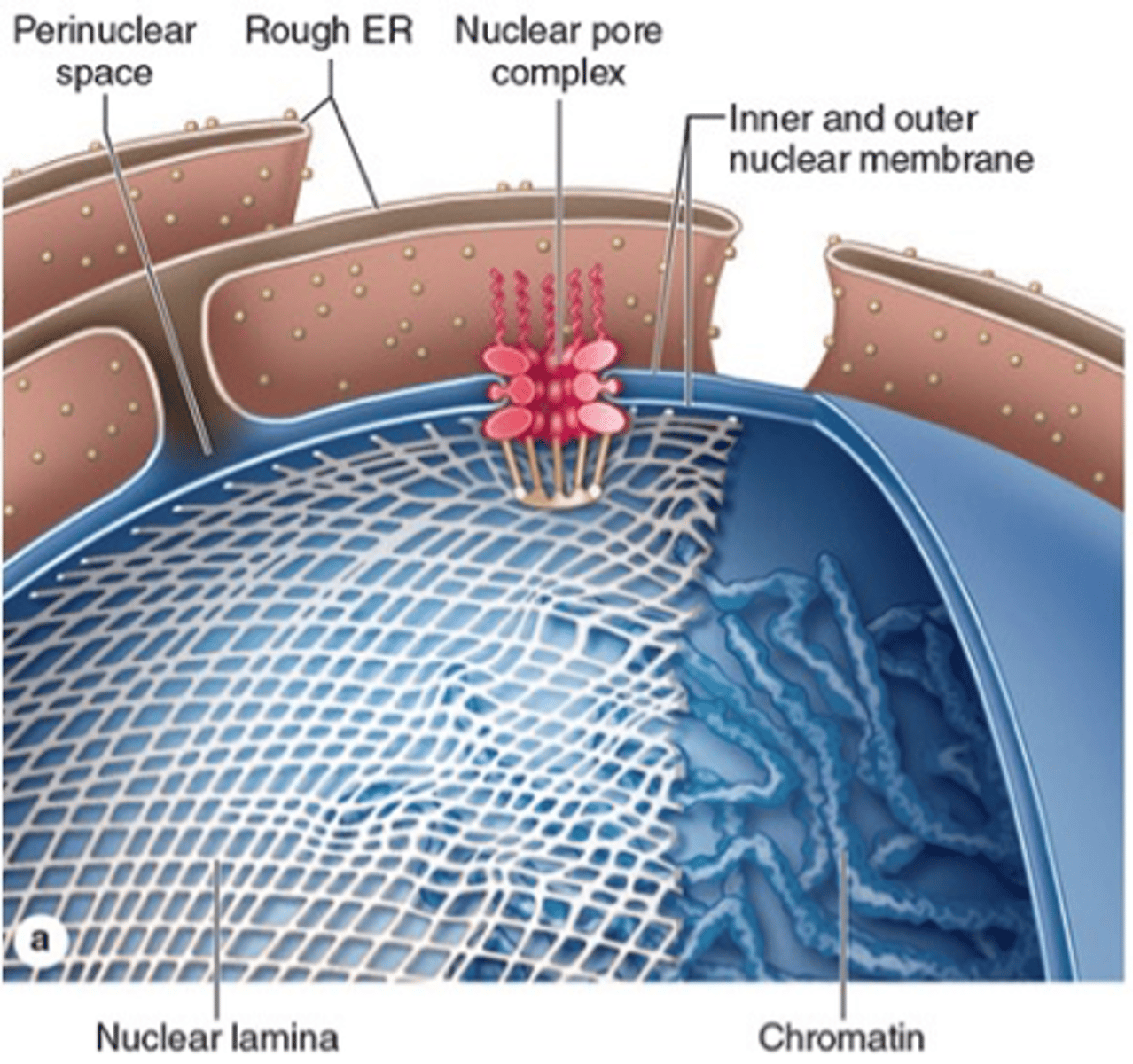
What are lamins?
intermediate filament proteins (lamins) bound to membrane proteins and associated with chromatin in nondividing cell
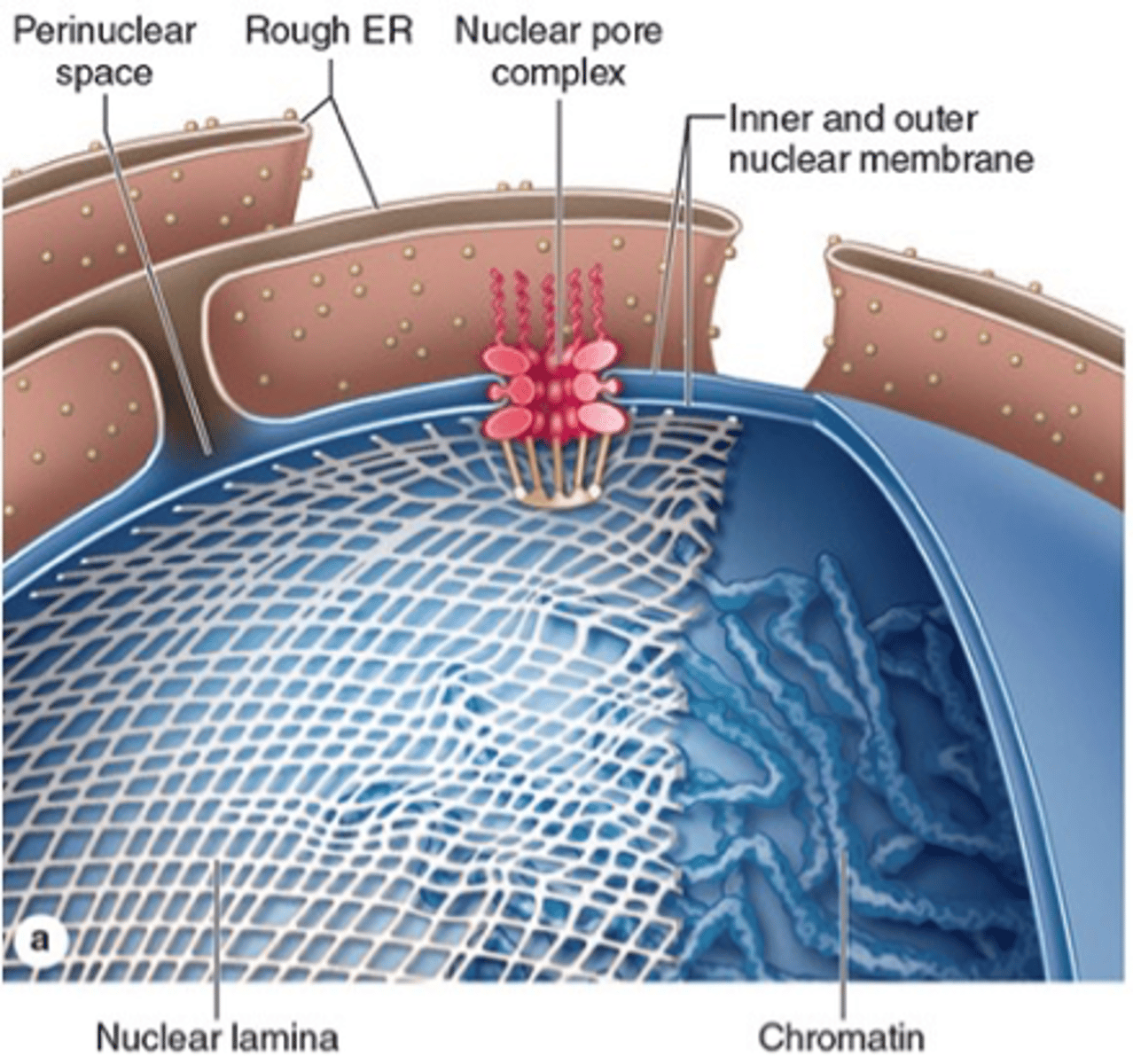
How many chromosomes are in human chromatin?
46 chromosomes (23 pairs)
Except gametes
How long is human DNA?
2 meters long
3.2 billion bp
What are histones?
Basic proteins (+)
Histones and DNA form structural units of DNA called
nucleosomes
Nucleosome structure
A core of eight histones and approximately 150 base pairs of DNA.

What does H1 histone do?
Histone associated with the wrapped DNA at the surface of the core
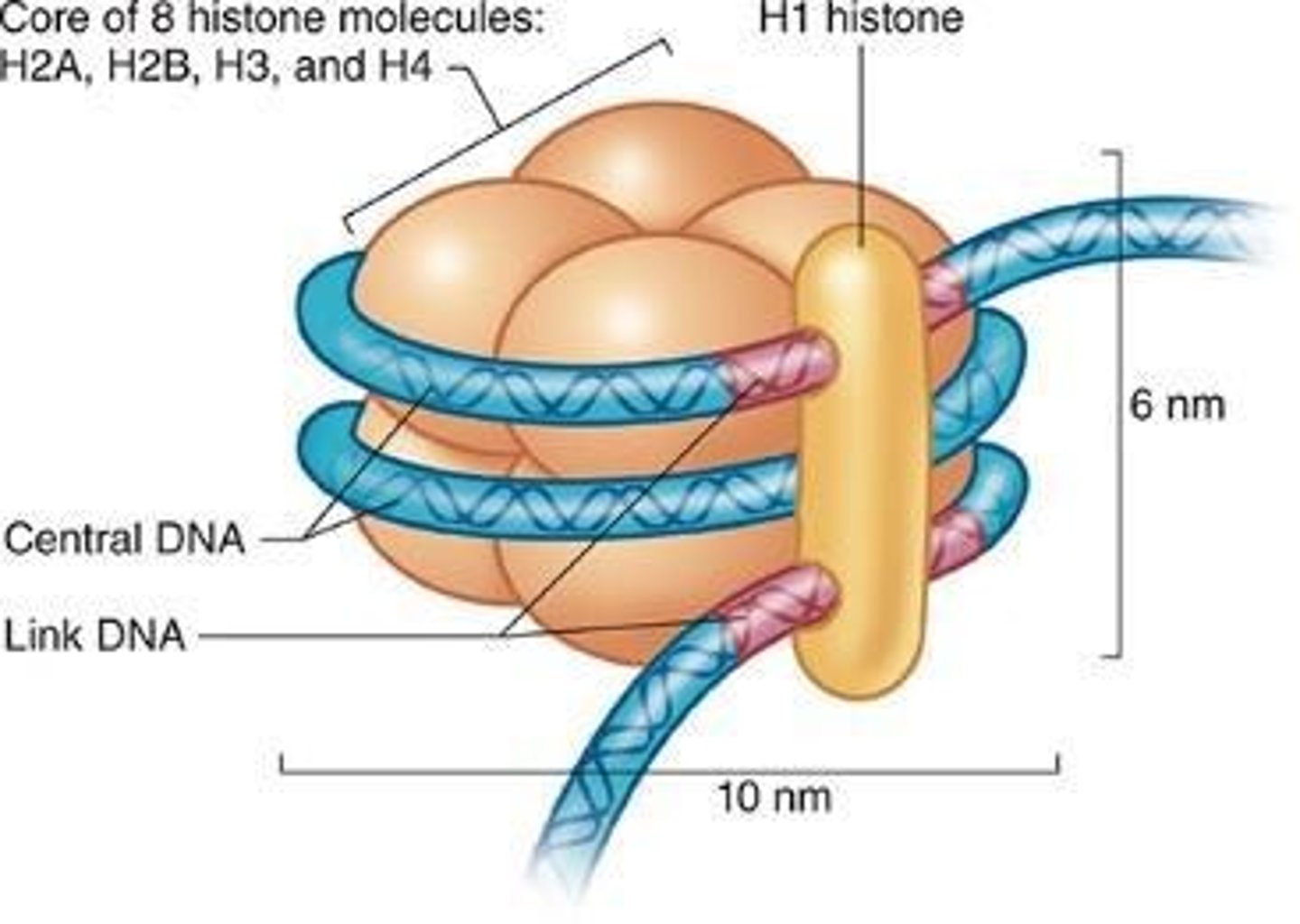
What are the other 8 histones?
H2A, H2B, H3, and H4
What is linker DNA?
50 - 80 bp that separates nucleosomes
How are nucleosomes key to DNA replication and transcription?
through histone modification and rearrangement
Chromatin folding
process where DNA and histones form nucleosomes, which further coil and condense into thicker structures

What is the thickest part of chromatin folding?
Larger loops of coiled DNA (300 nm thick)
(Some are unstable showing transcriptional activity)
How are larger loops tethered?
Many loops are tethered to condensins (protein complexes). ->Leads to chromatin condensation.
Describe heterochromatin
Transcriptionally inactive or less active.
Appearing in intensely basophilic clumps, and coarse, electron-dense material.
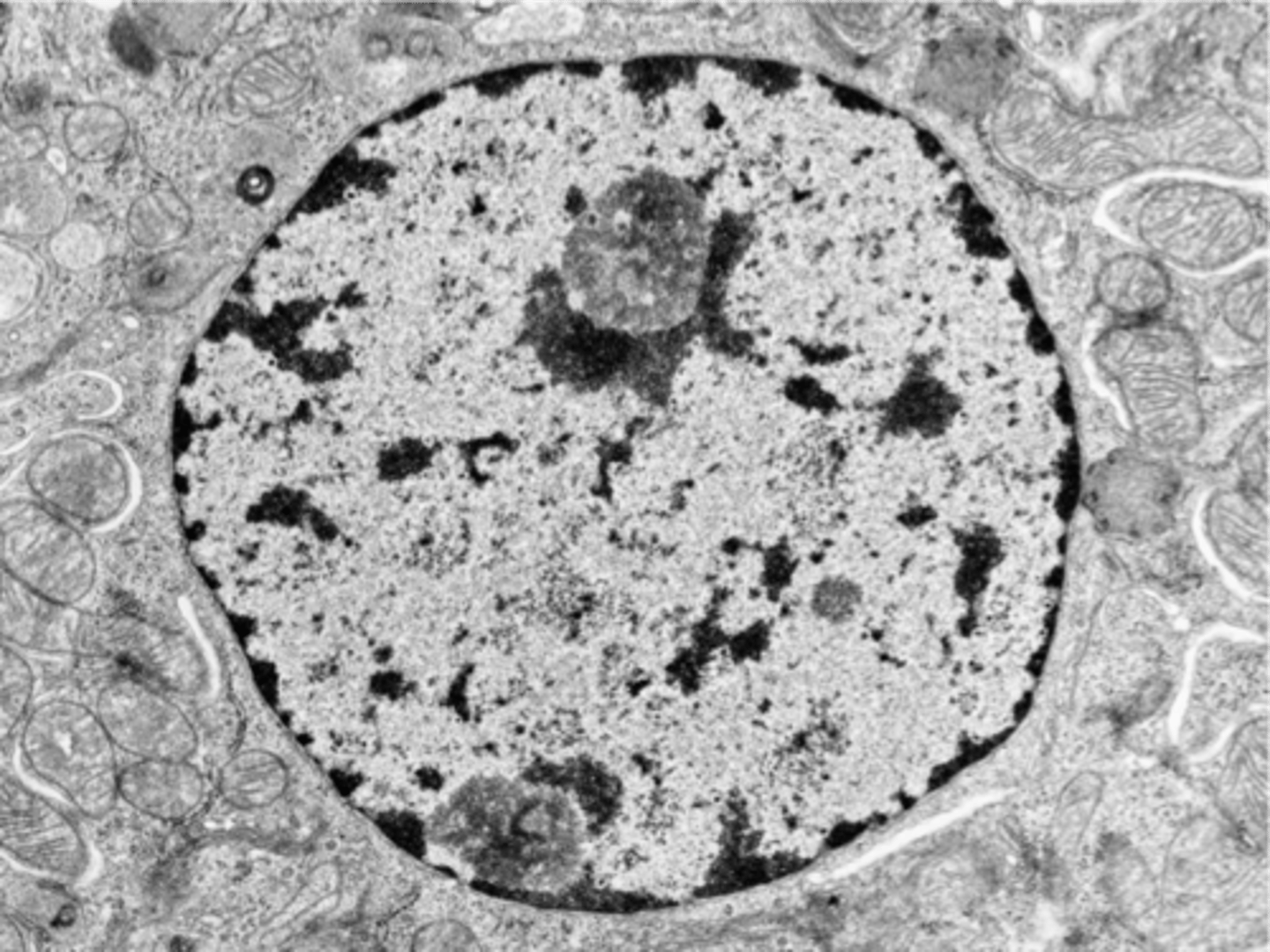
Where does heterochromatin dominate?
Predominates in cells with little or no metabolic activity
Describe euchromatin
Transcriptionally active and appears as dispersed fine granules with slightly basophilic clumps.
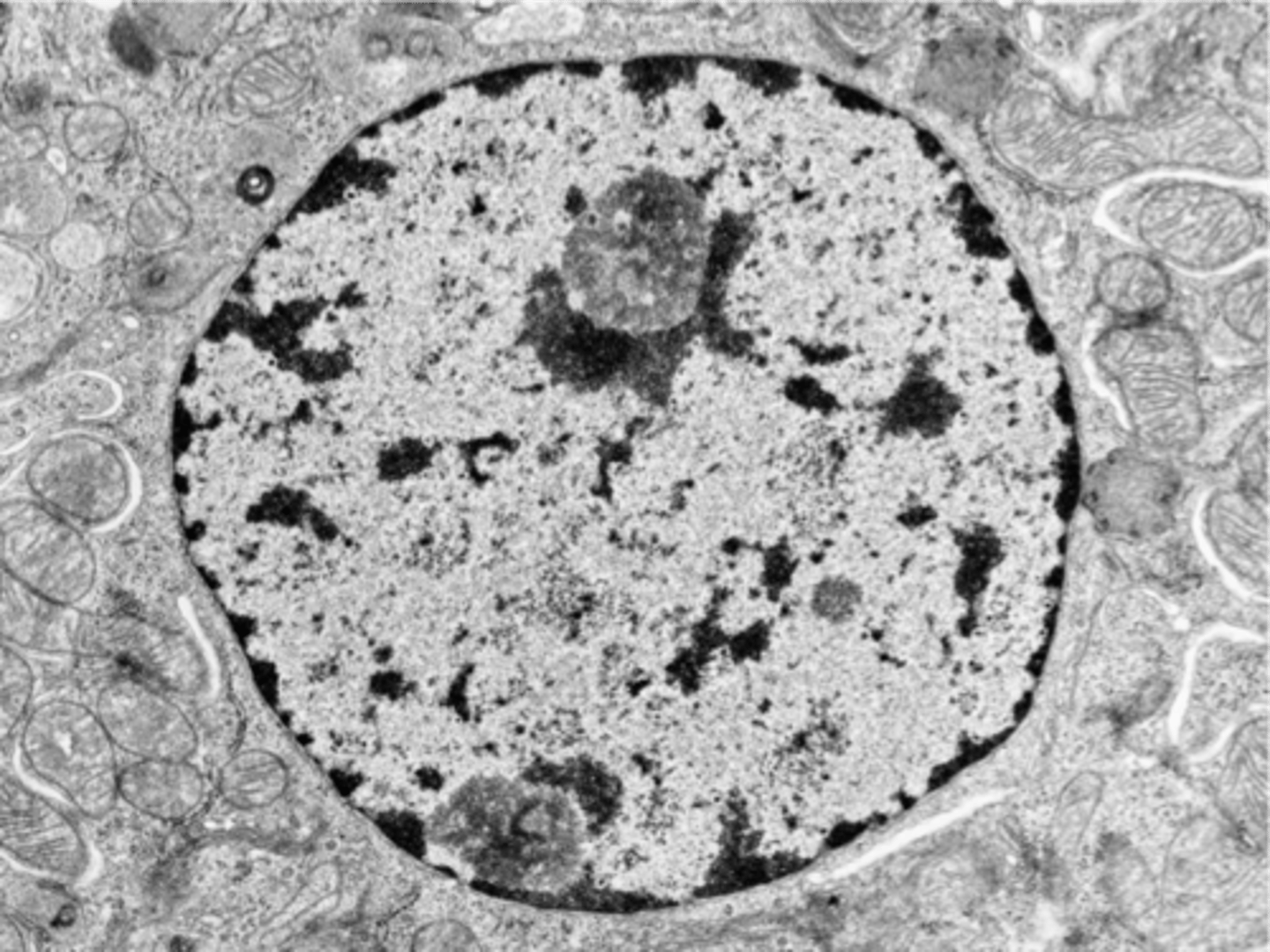
Where does euchromatin dominate?
Predominates in metabolically active cells
Chromosomes
Structures that contain maximum coiling of DNA, visible during mitosis and meiosis.
Somatic cells are diploid or haploid?
Somatic cells are diploid –> 2n
•22 pairs of autosomes and 1 pair of sex chromosomes
Gametes cells are diploid or haploid
•Gametes are haploid –> n
•22 autosomes and 1 sex chromosome
Cellular microenvironment
The local environment surrounding a cell that influences its behavior and differentiation
Karyotype
The number and appearance of chromosomes in the nucleus of a somatic cell.
Nucleolus
A highly basophilic region within the nucleus, prominent in protein-synthesizing cells, involved in ribosome production.
The nucleolus has a high concentration of what?
dense concentration of rRNA
Important function of the nucleolus?
Ribosomes production
•Transcription of molecules of rRNA
•rRNAs associate with ribosomal proteins
•Assembly of ribosomal subunits
What is the cell cycle?
The sequence of events that lead to cell division, consisting of four phases: Mitosis, G1, S, and G2.
Mitosis
A phase of the cell cycle where the cell divides to produce two identical daughter cells (clones)
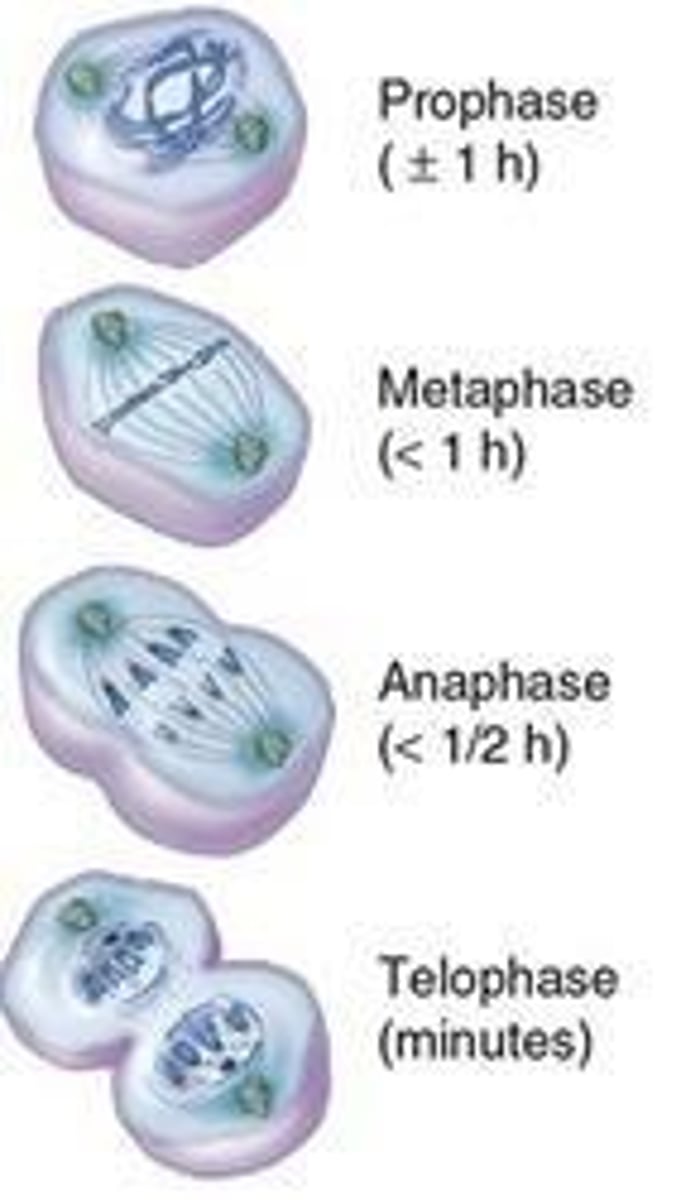
Somatic cells undergo?
Mitosis:
Parent cell divides
two identical daughter cells (clones)
same DNA
G1 Phase
Usually the longest phase. RNA and protein synthesis.
S Phase
DNA replication; Histone synthesis; Beginning of centrosome duplication
G2 Phase
Relatively short; Accumulation of proteins. Prep for mitosis
G0 Phase
Quiescent state; Cellular differentiation; Cell cycle suspended (may or not restart)
Prophase of Mitosis
Nucleolus disappears;
Chromatin condenses;
Mitotic spindle forms -> Centrosomes migrate to opposed poles
Nuclear envelope vanishes
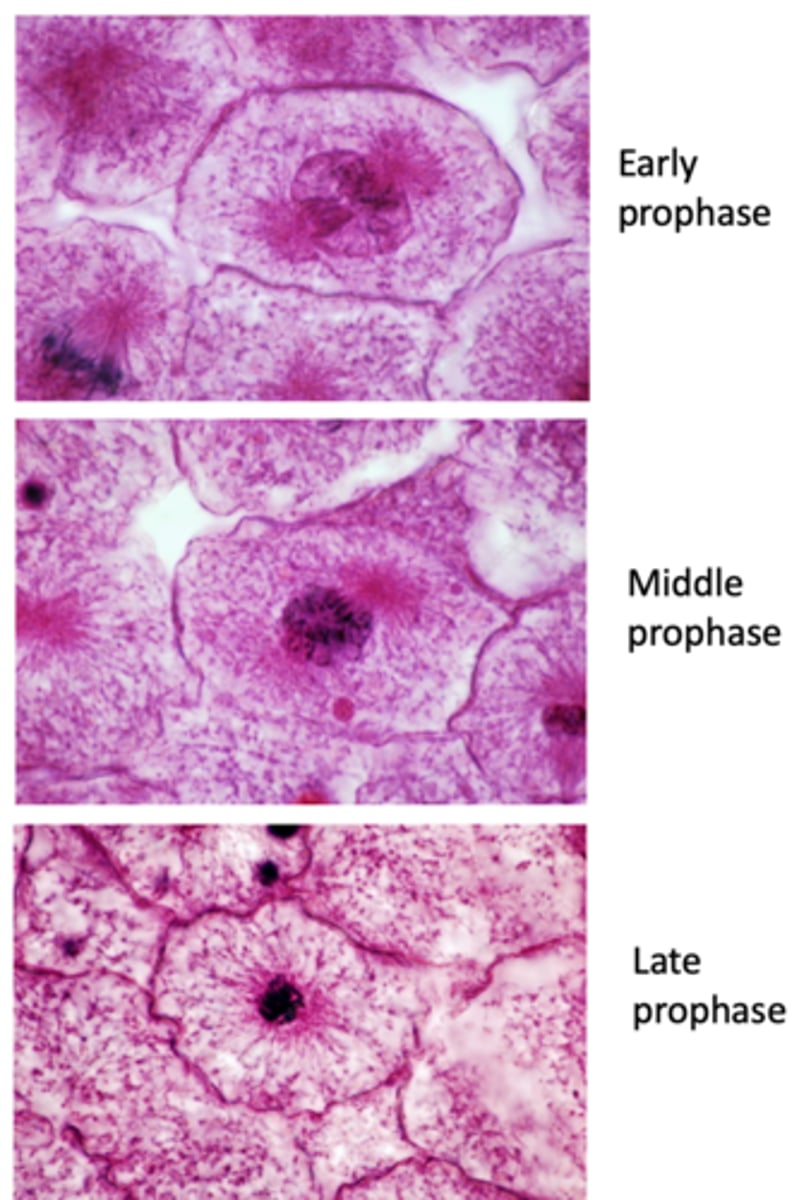
What happens as the nuclear envelope vanishes?
Phosphorylation of lamins and inner nuclear membrane protein
-> Nuclear lamina and nuclear pores disassemble
Metaphase
Chromosomes further condense;
Kinetochore proteins attach to chromosome center; Chromosomes align in the equator of the cell

Anaphase
Sister chromatids separate;
Migrate to opposite poles
During anaphase each sister chromatid is now what?
each sister chromatid is now a single chromosome
Telophase
Chromosomes back to uncondensed state;
Nuclear envelope reassembles around each set of daughter chromosomes
Where are the 2 pairs of chromosomes during telophase?
1 at each spindle (pole)
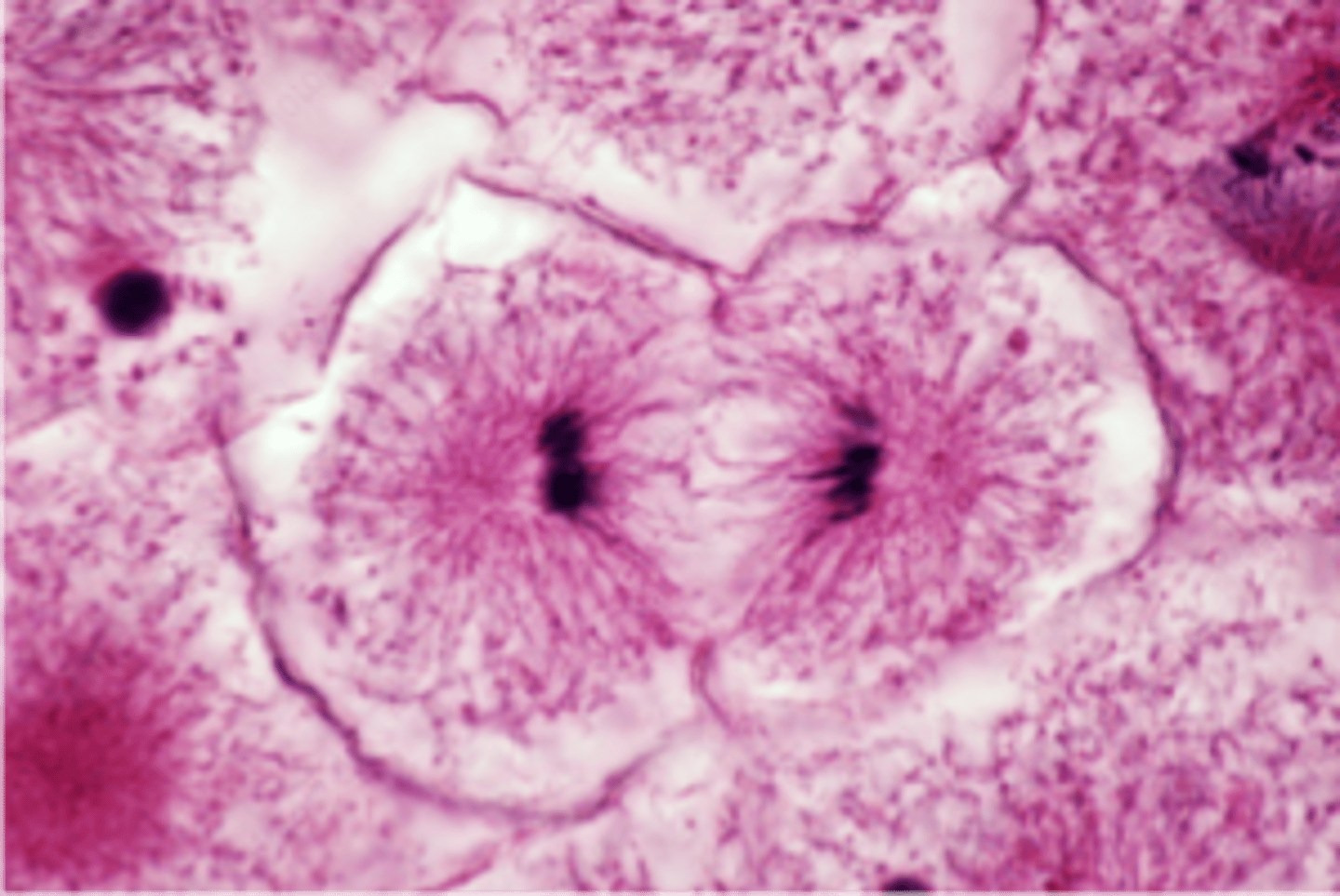
Why are actin and myosin important in telophase?
in telophase, actin and myosin filaments form a belt at the equator
Cytokinesis leads to
Constriction of ring forms cleavage furrow; Two daughter cells result
Stem Cells
Undifferentiated cells;
Divide infrequently;
One remains as stem cell, one becomes a progenitor cell
Progenitor Cells
Also known as transit amplifying cells;
Frequent mitosis to increase the number of new cells
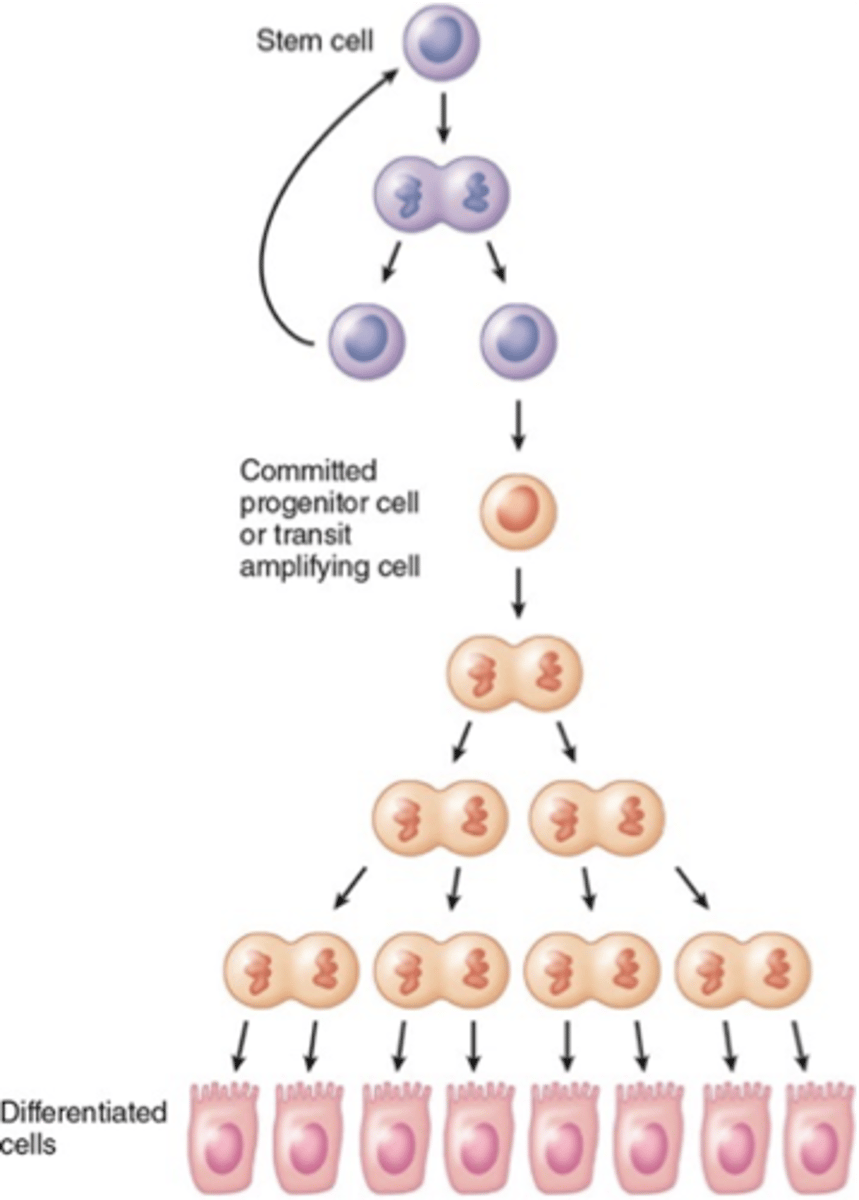
Terminally Differentiated Cells
Low or no potential for cell division;
Renewal depends on stem cells
example of cells in G0 that may reenter the cell cycle
hepatocytes
Meiosis
Specialized process with two unique cell divisions;
Only in germ cells
What are germ cells?
Cells that will become sperm or oocytes – (gametes)
Characteristics of Meiosis
1.Crossovers between homologous chromosomes
2.Formation of four haploid cells
(each cell with only one chromosome)
Genetic Variability
New combinations of genes resulting from crossovers between homologous chromosomes
Meiosis I
Includes Prophase I, Metaphase I, Anaphase I, Telophase I, and Cytokinesis
Prophase I
Longer than in mitosis;
Homologous chromosomes form synapsis - tetrads
Crossover occurs
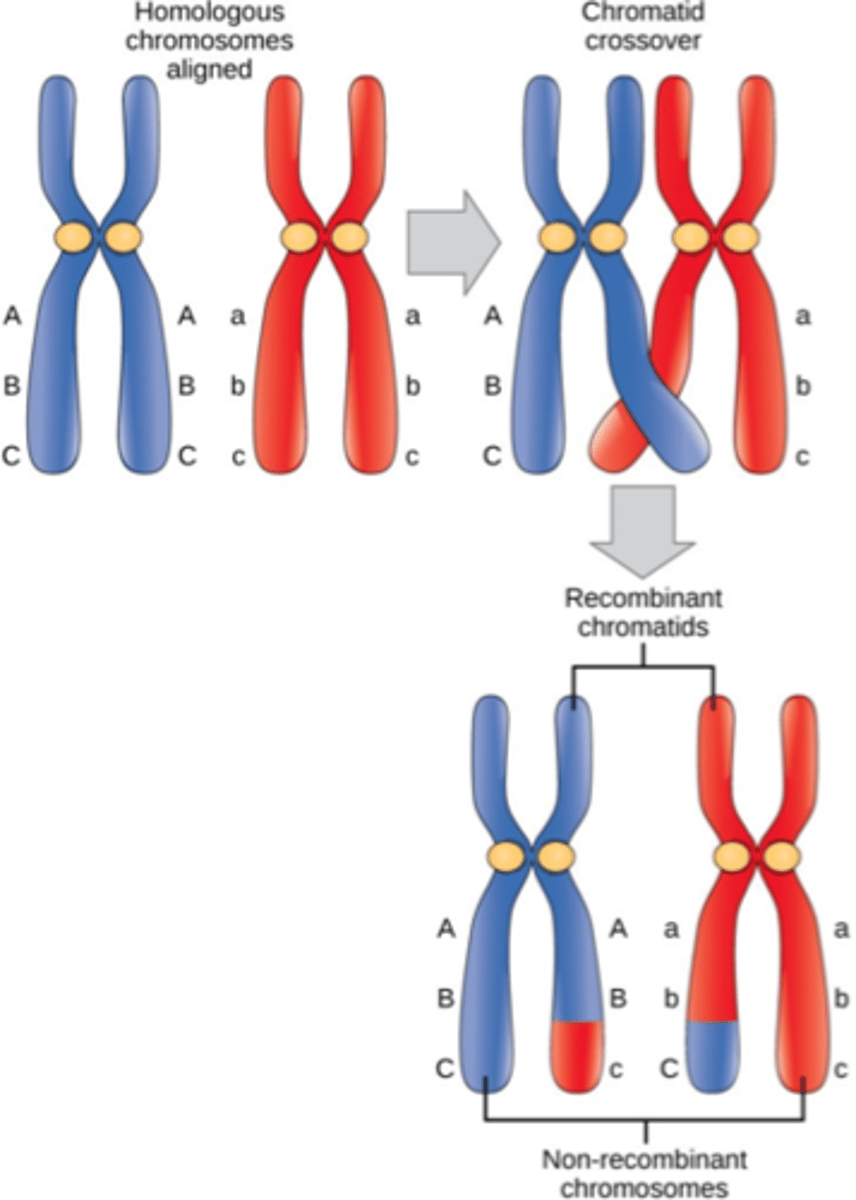
Crossover is:
Reciprocal DNA exchanges during Prophase I that lead to genetic recombination
Metaphase I
•Random arrangement of homologous chromosomes
Two chromosome arrangements
Four genetic arrangements
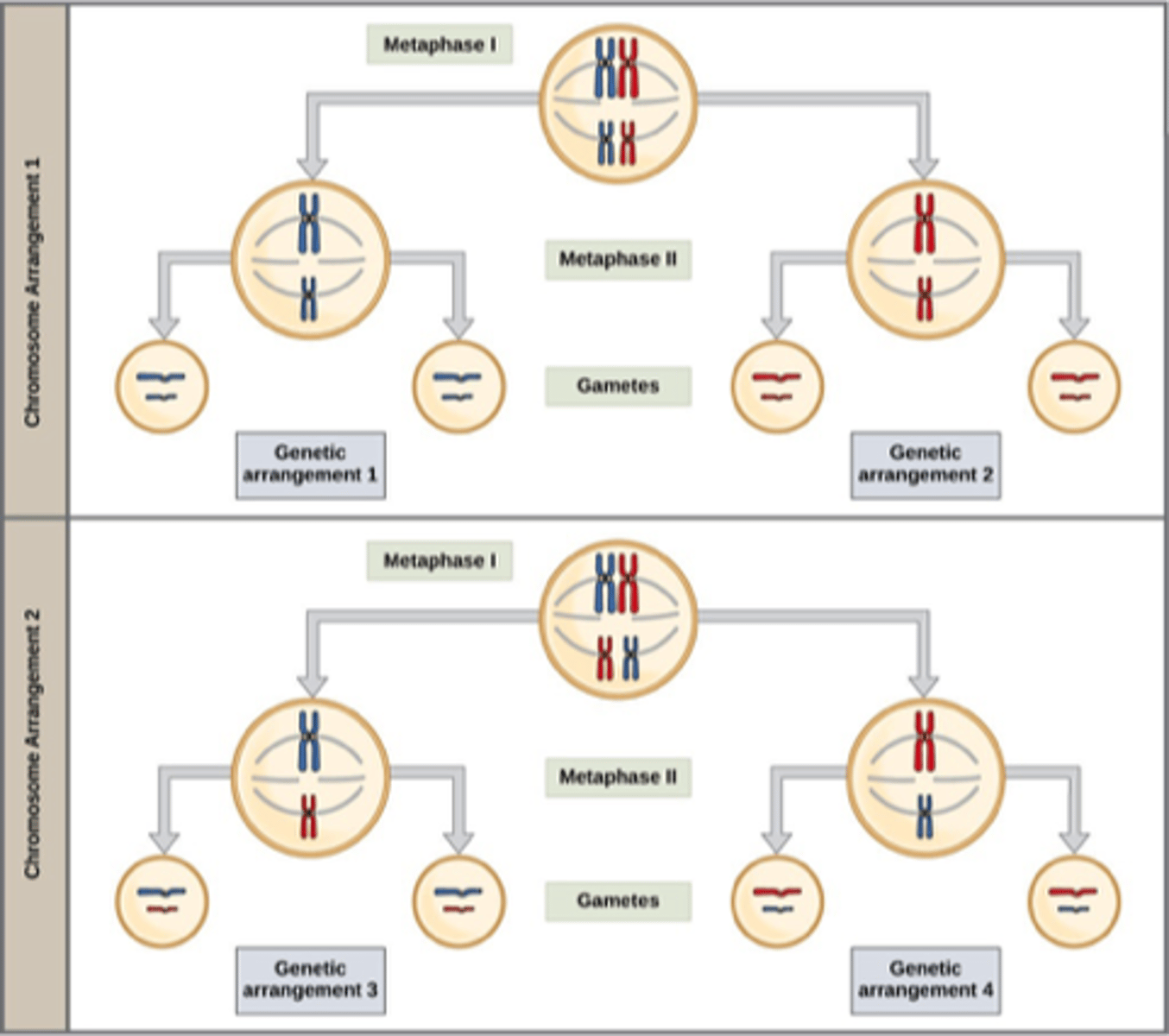
Anaphase I
Homologous chromosomes separate
Migrate to opposed poles
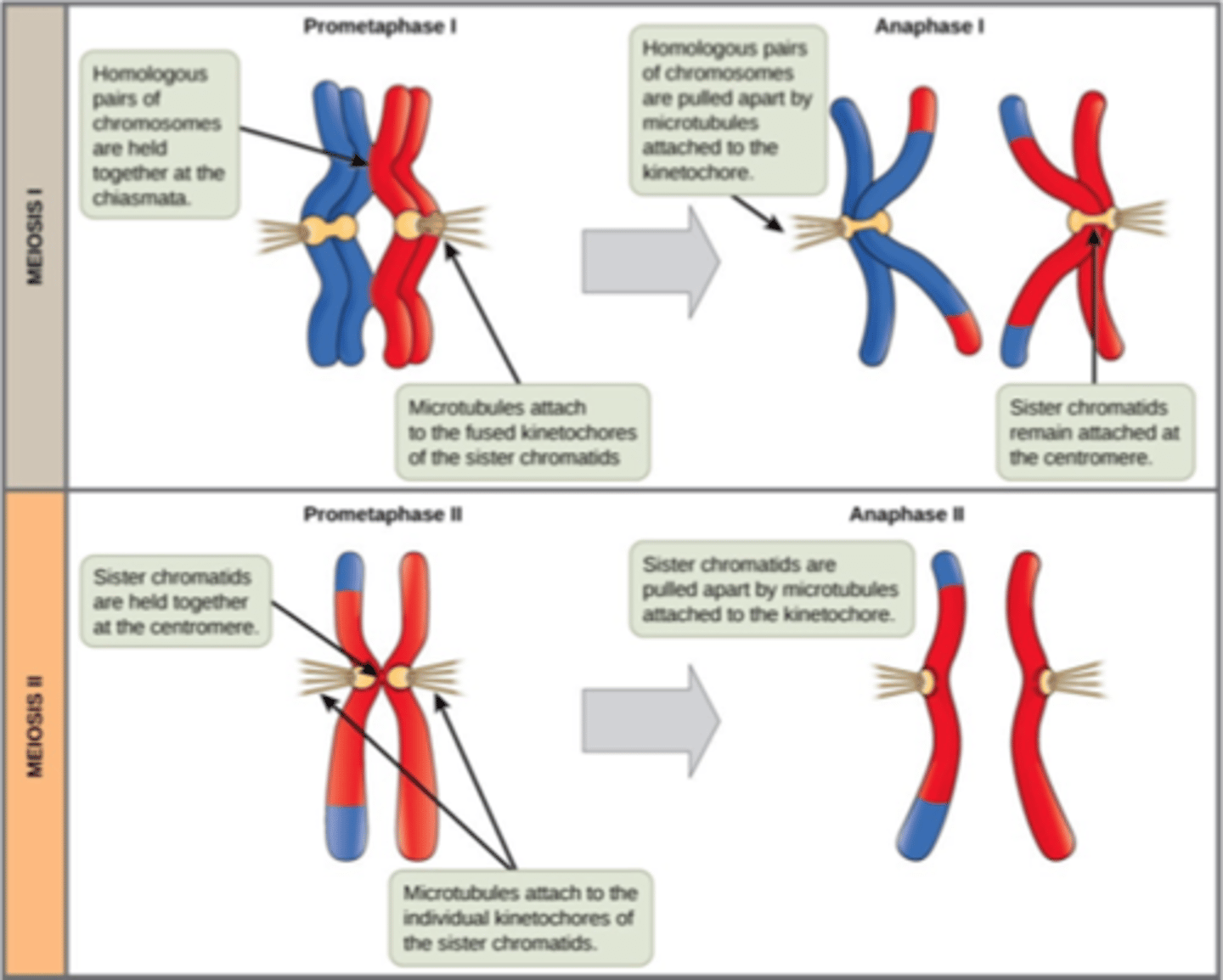
Telophase I and Cytokinesis
Same as in mitosis
Result of meiosis I
1. two haploid cells (n)
2. Diploid chromosomes (each chromosome retain the two sister chromatids)
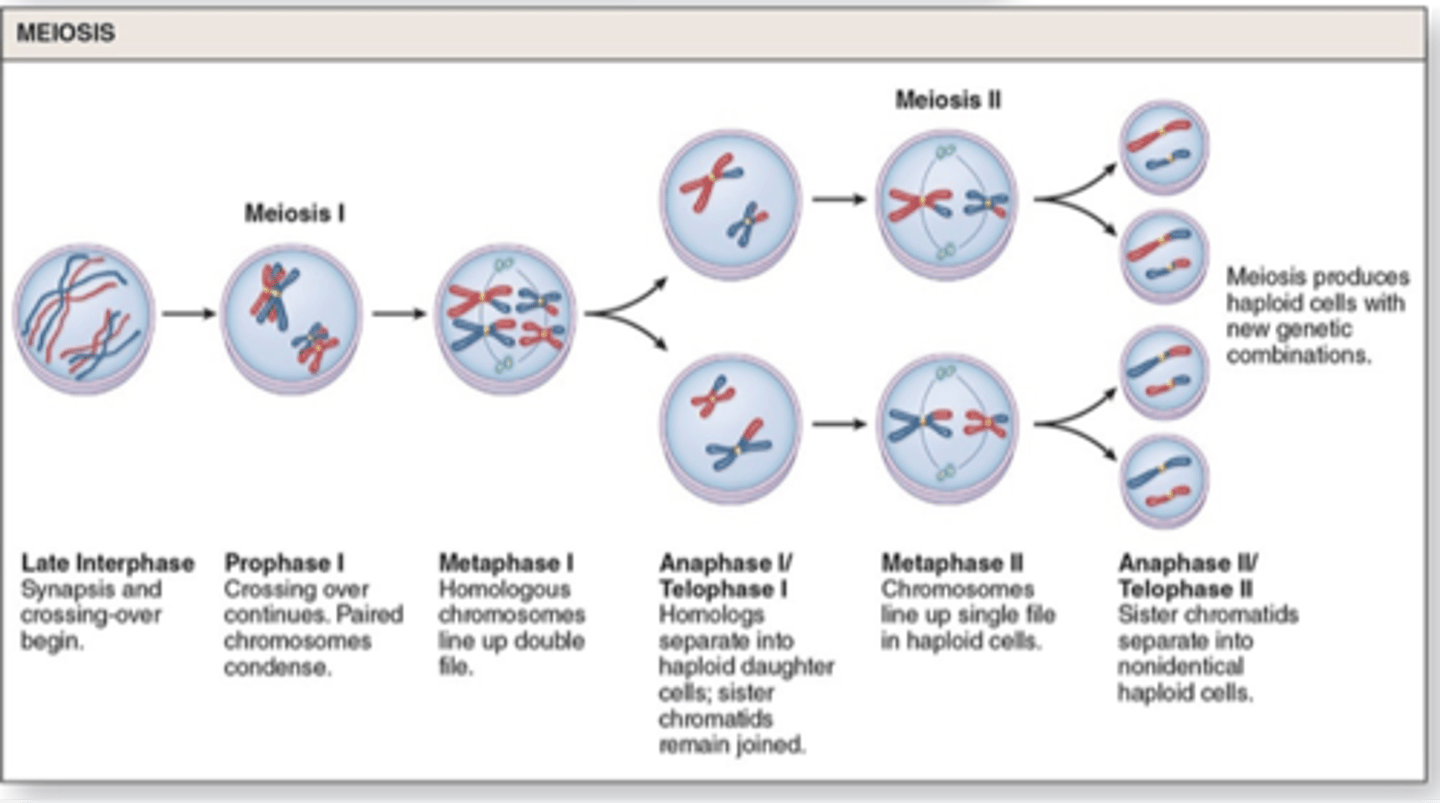
Haploid Cells
Cells with only one chromosome from each pair
Diploid Chromosomes
Each chromosome retains the two sister chromatids after Meiosis I
Meiosis II
Same as mitosis;
Results in four haploid daughter cells with haploid chromosomes
